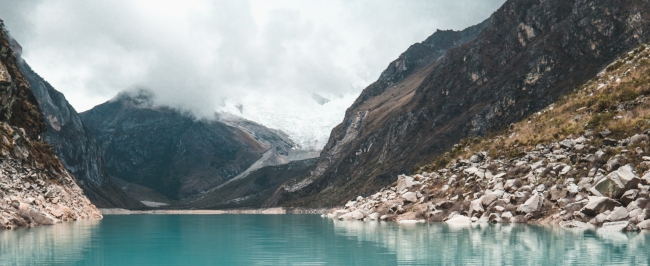The old and the new: exploring Peru’s growing water scarcity

Water supplies across the world are under threat from climate breakdown. Is imposing a technical fix always the right answer?
The challenge
Peru is home to 70% of the world’s vital tropical glaciers, and glacial meltwater provides a year-round water supply for a quarter of a million people. It’s a critically important source for irrigating subsistence and commercial crops. However, highland populations report declining supplies during the dry season, as well as less predictable volumes throughout the year.
To address growing water scarcity, authorities routinely look to modern engineering solutions, but while well-intentioned, these projects often take for granted local knowledge and pre-existing practices that may offer more flexible, long-lasting results. Infrastructure such as concrete pipelines may be hard to maintain, reveal design flaws and, ultimately, break down.
What we're doing
Nestling between Andean peaks, the Peruvian village of Huashao is a good example of this tension. In 2011, keen to encourage more efficient water use, municipal authorities consulted with villagers to line a soil-based, open irrigation canal with concrete. The intention was to prevent leaks and transform the canal into a pipeline distributing water to people in sparsely populated areas.
My aim was to understand how villagers experience and respond to shifts in water use and management, including changing canal infrastructure. Over nine months, I interviewed villagers and key community leaders, observing people’s day-to-day water management and the challenges they faced. I spent time with the village’s irrigation committee, where the community’s approach to water use was defined and its concerns were aired. Many people here need water not only for subsistence but for profit too – commercial growers in Huashao provide fruit and flowers for Peru’s markets.
While the pipe was largely welcomed and addressed issues of conflict surrounding access to and ownership of water, over time, new issues emerged. For example, the design was called into question when water burst the canal’s banks, and women reported reduced water levels at local puquios (valued underground springs) caused, they believed, by less water filtering naturally through the earth from the concrete-lined canal.
How it helps
Studies such as this have sparked renewed interest in traditional irrigation systems and the pre-Colombian structures that fed underground water deposits. By considering the relationships between communities, cultures and environments, policymakers can hear about the important historical context of people and place, understand community responses to past challenges and recognise the value of combining old expertise with new for tackling global problems locally.
Investigators
- Dr Susan Conlon, Bristol Veterinary School
- Sheila Aikman (PhD Supervisor), School of International Development, University of East Anglia (UEA)
 Lead researcher profile
Lead researcher profile
Dr Susan Conlon, Research Associate in Human Geography, Bristol Veterinary School
Related research centres
Partner organisations
- University of East Anglia